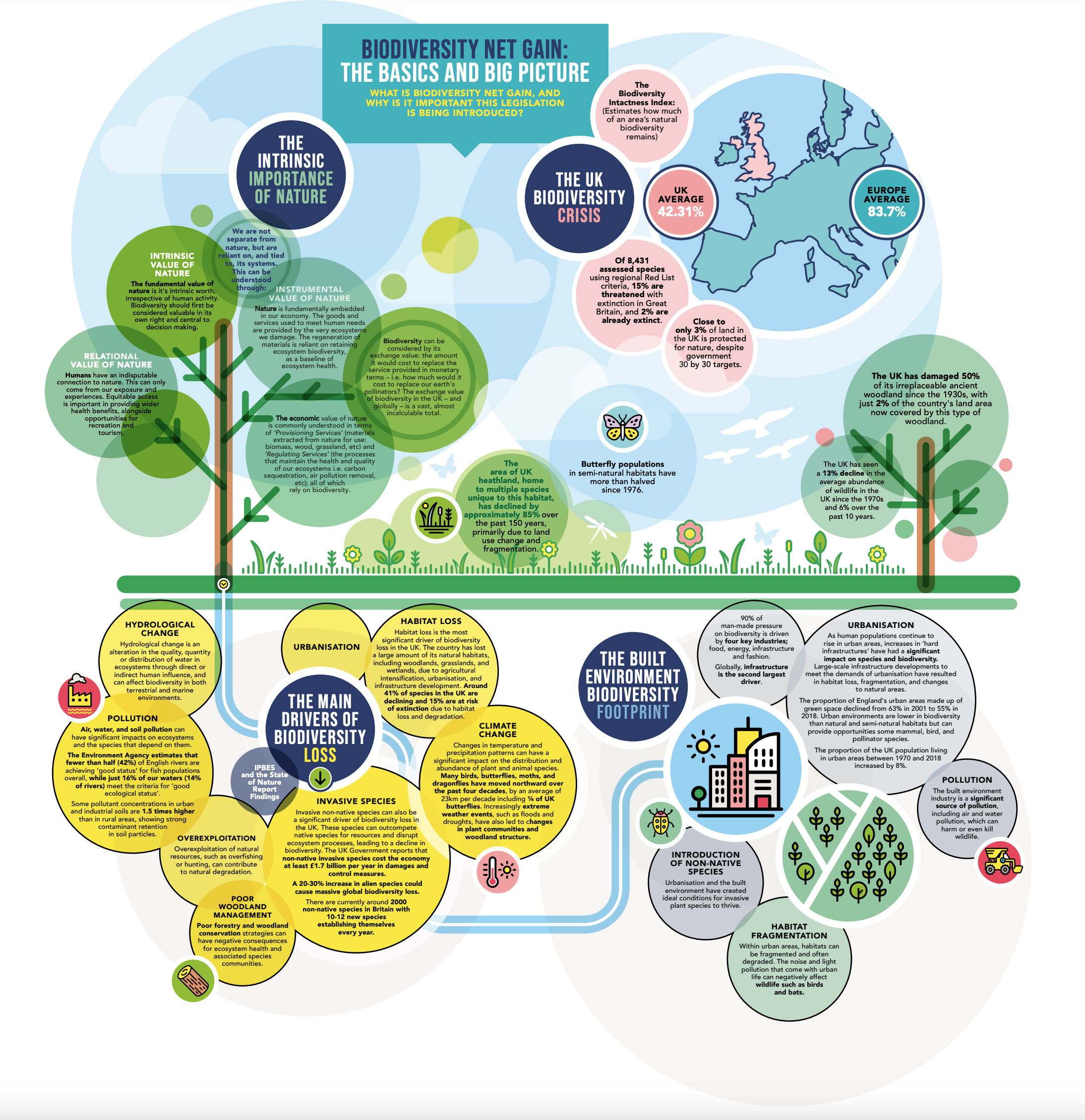How will the new Biodiversity Net Gain (BNG) Policy affect my project?
Image: UK GBC infographic
The government is bringing new legislation for all developments to achieve 10% BNG from the 2nd April 2024.
The requirement will apply to all new development applications except or the following exclusions:
· Householder applications
· Self & custom Build projects (where the applicant is having a house built for themselves to live in)
· Applications that impact less the 25 m2 of on-site habitat, and do not impact a priority habitat
One of the implications for applications is that the planning benefit of providing BNG when the policy does apply would not be given the same weight as a material consideration, as it is now a statutory requirement. But it should still be given the same material weight when the policy doesn’t apply (as confirmed by a case in the High Court).
Planning requirements
Depending on which council the application is going to, more information will need to be submitted to demonstrate compliance with the new policy. As an example, Bristol Council are requiring for planning validation:
Biodiversity Net Gain Report, set out in accordance with the CIEEM Guidance
Completed Statutory Metric (which can be a considered draft) – this is the calculation comparing the existing and proposed habitat units to determine the overall net gain
GIS Mapping of existing and proposed habitat areas
Habitat Management and Monitoring Plan (which can be a considered draft) to cover the next 30 years
After planning approval, a ‘Biodiversity Gain Plan’ must then be submitted with final versions of all the above for approval.
Quite a comprehensive set of information! and must be undertaken by a qualified Ecologist – this is in addition to the Preliminary Ecological Appraisal which would normally be required for relevant applications. We’re used to working with Ecologists on many of our projects and would manage this process as part of our service.
Whilst this can seem like a bit of a box ticking exercise, it’s important to remember that improving the ecology of a site will improve the wellbeing of the future occupants and the wider world around it.
How is Biodiversity measured?
The catchily named ‘Statutory Biodiversity Metric’ is a standardised calculation tool comparing existing habitats on the site to the proposed development and mitigation measures. It does this by factoring in the amount, type, quality and condition into a measure called ‘Habitat Units’.
If BNG cannot be achieved through on-site mitigation methods, credits for off-site measures on other land owned. By the applicant can be used, and failing this Statutory credits can be bought from the government - but this should only be as a last resort.

